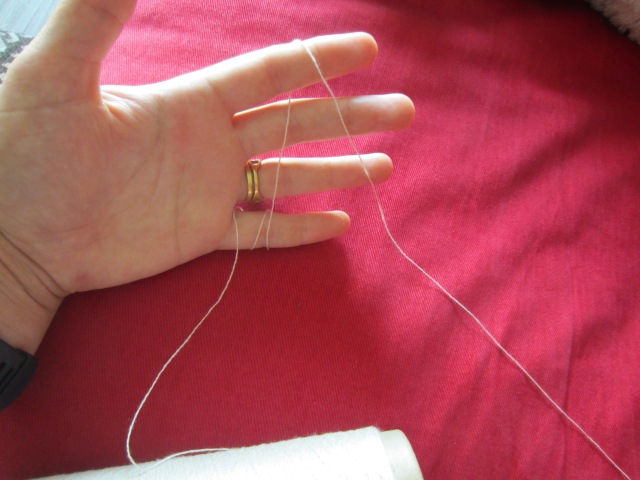This post is part of a series about the basics of the not-exactly-knitting parts of knitting.
Once you start to get a little more comfortable with making stitches, tension will start to be important. This is the way you keep your working yarn consistently tight so that all your stitches come out the same size. Most knitters have some way or other they always hold their working yarn. (I’m not talking about picking vs. throwing here – which hand you use to hold the yarn. That’s a different post.) I use the same way as my mother, mostly because she was the one who first taught me about fiber crafting: over my index finger and then looped around my pinky. To move the yarn along, I do a little pinky-flick. But you can also wrap the yarn around your fingers in any number of other ways. If you have someone teaching you, they may have some specific method they showed you. But really, it doesn’t matter how you do it, as long as you have some way that works for you. So this is basically several example pictures of some ways to hold your yarn.
Don’t be afraid to modify your technique if you need to! As you gain experience, you’ll be able to tell if things feel a little loose or tight. I sometimes have to change based on the weather, or the kind of yarn I’m using. If things are feeling tight (humidity can do this to me), I sometimes drop my pinky wrap. If it’s feeling loose (especially if I’m using a really thin yarn), sometimes I double up.

Doubling up on the pinky wrap for thin yarn
It’s generally very hard to change your tension on purpose – to knit more tightly or more loosely than you generally do. For me at least, my hands have figured out how it works, and keep tension without any interference from my brain. If you need to change your tension for some reason, it’s much easier to change your needle size. You may need to experiment a tad to figure out exactly which size you need (this is called swatching, which will be the subject of another post), but it’s much less tedious than trying to remind yourself constantly to knit tighter or looser, and then ripping it out when you forget.
Happy knitting!
For other posts in this series:




I am a beginning knitter and an experienced crocheter. I find it impossible to purposeful crochet a a tension different from my normal tension. Changing hook size is the only way to go. With crocheting, changing hook size can make it harder to work with a yarn. Going to a smaller hook than is normally used with a specific weight of yarn can make it more difficult to get the yarn through the loops. I tend to split the yarn more frequently. So there are other things to consider when changing hook size to get a tighter fabric. I don’t know how this applies to knitting.
Similarly for knitting, needles that are much too big or much too small for the yarn cause problems. Really thick needles with thin yarn, and the tips aren’t pointy enough to manipulate the stitches. Tiny needles with thick yarn, and the stitches are so tight and bunched together it’s hard to see what you’re doing, and hard not to split the yarn (pierce the yarn itself, instead of going through the loop, resulting in loose partial loops of yarn).